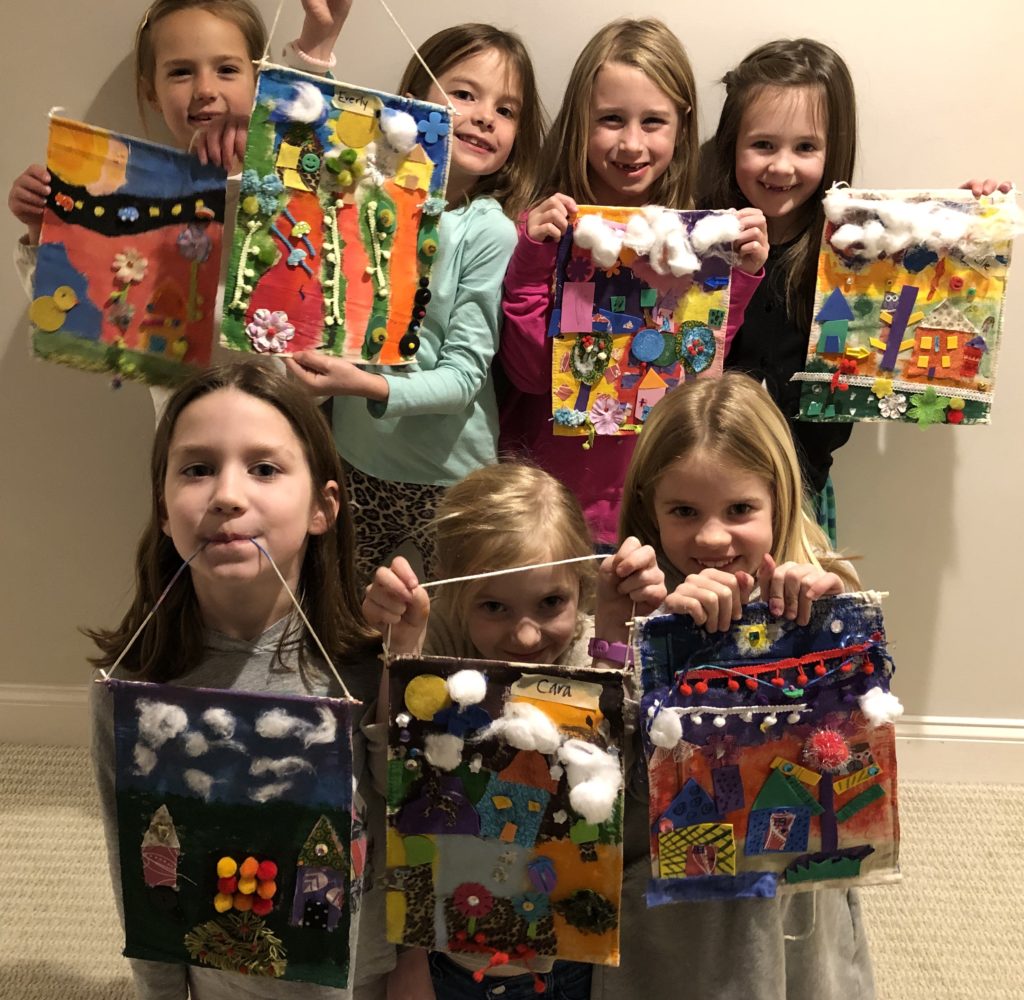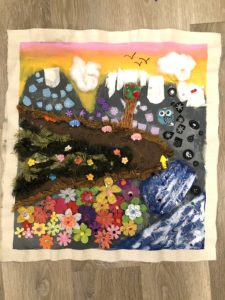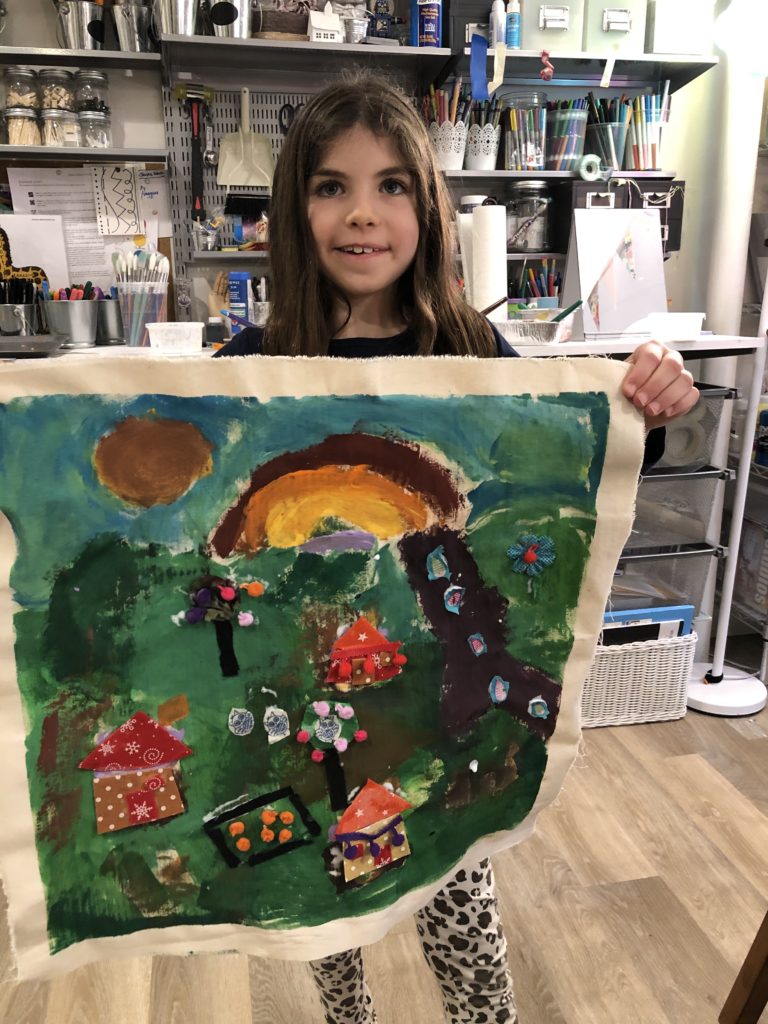
2 HOURs | INTERMEDIATE | Ages 6+
Materials Needed:
Canvas/muslin/burlap backing, acrylic paint, fabric, felt, pom poms, cotton balls, Tacky Glue for fabric, scissors
According to Wikipedia, an Arpillera, (which means burlap in Spanish,) is a brightly colored patchwork picture made predominantly by groups of women. Arpilleras originated in Chile during a dictatorship that started in 1973. The handmade pictures were an expression of protest against political and economic injustices there at the time. The sale of the quilts helped the women who created them earn money from their artistry, at a time when there were very few opportunities for employment.




2. PLANNING It was important for each artist to sketch out their ideas on paper before moving to the canvas, which in this case was a piece of canvas drop-cloth that I measured and precut for them. Once they transferred their sketch idea to the larger canvas they got to work painting, then cutting and collaging pieces onto their background. Traditionally, the pieces of an arpillera are quilted and sewn together, or embroidered. But to save time, we chose to glue the pieces of our neighborhoods onto the painted fabric backgrounds.
Overall, I think this was one of the most engaging projects we have ever done in the studio. The cultural tie-in to an actual arpillera was a wonderful way to begin the project. Encouraging each artist to design their own neighborhood made the artwork much more meaningful to each child. They were bold, and absolutely beautiful. Here are a few of the finished pieces:
